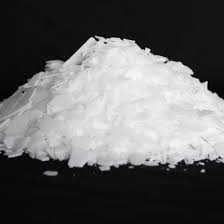Chemical safety is a paramount concern in the chemical industry and any sector where chemicals are used. The inherent risks associated with improper handling of chemicals can lead to accidents, health hazards, and environmental damage. Therefore, understanding the principles of safe chemical handling is essential for preventing these risks and ensuring a safe working environment.
Understanding Chemical Hazards
Chemical hazards can be broadly categorized into physical, health, and environmental risks. We can summarize these risks as below:
Physical Hazards
Flammability: Some chemicals can easily catch fire, posing a significant risk of burns or explosions. Examples include solvents like acetone and ethanol.
Reactivity: Certain chemicals react violently when exposed to air, water, or other substances. This can lead to explosions or the release of toxic gases.
Explosiveness: Some compounds, under certain conditions, can explode, causing physical damage and injury. This is often related to pressure or chemical instability.
Health Hazards
Toxicity: Chemicals like mercury and lead can be toxic, causing damage to organs or systems upon exposure.
Corrosiveness: Acids and bases, such as hydrochloric acid and sodium hydroxide, can cause severe burns on the skin or damage to respiratory organs if inhaled.
Carcinogenicity: Certain chemicals, like asbestos or benzene, are known to cause cancer with prolonged exposure.
Sensitization: Repeated exposure to certain chemicals can lead to allergic reactions, which can be severe in some cases.
Environmental Hazards
Water Pollution: Chemicals that are harmful to aquatic life can cause significant damage if they enter water bodies. This includes pesticides and certain industrial chemicals.
Air Pollution: Volatile organic compounds (VOCs) and other harmful gases can contribute to air pollution, posing a risk to both the environment and public health.
Soil Contamination: Chemicals that contaminate the soil can have long-term effects on plant life and can leach into groundwater.
Exposure Hazards
Inhalation: Breathing in chemical vapors, dust, or gases can lead to respiratory issues or other health problems.
Skin Contact: Direct contact with chemicals can cause burns, rashes, or absorption through the skin, leading to systemic effects.
Ingestion: Accidental swallowing of chemicals can lead to poisoning, which can be fatal in severe cases.
Personal Protective Equipment (PPE)
The use of appropriate PPE is critical in mitigating the risks associated with chemical exposure. This includes gloves, such as chemical handling gloves or rubber gloves, which protect against skin contact with harmful substances. Eye protection, respirators, and protective clothing are also essential, depending on the chemicals handled. It is important to understand the specific protection required for different chemicals and ensure that all PPE is in good condition and used correctly.
Safe Storage of Chemicals
Proper storage of chemicals is vital to prevent accidents and deterioration. You can check the guide shared below:
Appropriate Segregation
Separate Incompatible Chemicals: You should store chemicals in a way that avoids contact between incompatible substances, such as acids away from bases, and oxidizers away from flammable materials.
Use Chemical Storage Cabinets: Specific cabinets designed for flammable, corrosive, or toxic chemicals should be used to ensure safe storage.
Labeling and Documentation
Proper Labeling: Every chemical container must be clearly labeled with the chemical name, concentration, hazard symbols, and date of receipt or opening.
Safety Data Sheets (SDS): You should keep an accessible and updated collection of SDS for all chemicals, detailing their hazards, handling precautions, and first-aid measures.
Environmental Controls
Temperature Control: You should store chemicals in environments with stable temperatures. Avoid areas where temperature fluctuations are common, as this can affect the stability of chemicals.
Ventilation: You should ensure good ventilation in storage areas to prevent the buildup of vapors or gases.
Physical Storage Guidelines
Use Secondary Containment: To prevent spills from spreading, you should use trays or tubs as secondary containment, especially for liquids.
Shelving and Stability: You should use sturdy, non-reactive shelving. Ensure that heavy containers that we store at lower levels to prevent falling hazards.
Access and Security
Restricted Access: Chemical storage areas should be accessible only to trained personnel.
Security Measures: You should implement locks or other security measures to prevent unauthorized access, especially for highly hazardous chemicals.
Regular Inspections and Maintenance
Routine Checks: You should regularly inspect storage areas for any signs of leaks, corrosion, or expired chemicals.
Inventory Management: You should keep an up-to-date inventory of all chemicals, including their quantities and expiration dates.
Special Considerations for Specific Chemicals
Flammable Chemicals: You should store in flammable storage cabinets or explosion-proof refrigerators.
Reactive or Volatile Chemicals: You should store in well-ventilated areas or fume hoods, away from sources of ignition.
Corrosive Chemicals: You should store in corrosion-resistant cabinets with spill containment features.
Handling and Transportation
Safe handling and transportation of chemicals require adherence to specific protocols to prevent spills and accidents. This includes using appropriate containers, ensuring they are sealed correctly, and handling them with care to avoid drops or spills.
When transporting chemicals, it is important to secure them properly and follow regulations for the transport of hazardous materials. Training in safe handling techniques is essential for anyone who involve in the transportation of chemicals.
Responding to Chemical Spills: A Step-by-Step Guide
In case of a chemical spill, having a clear plan of action is crucial. The first step is to assess the risk and determine if evacuation is necessary. If safe to do so, contain the spill using absorbents or spill kits, and clean it up according to the guidelines specific to the chemical. Disposal of the spill material must be done in compliance with hazardous waste regulations. Reporting the spill to the appropriate authorities may also be required.
Waste Management and Disposal
Proper waste management and disposal are critical components of chemical safety. Different types of chemical waste require different disposal methods, such as incineration, neutralization, or specialized hazardous waste facilities. Compliance with environmental regulations is essential to prevent pollution and ensure public and ecological safety. Regular audits and training in waste management practices are key to effective waste disposal.
Training and Safety Culture
Creating a culture of safety within an organization is fundamental to effective chemical handling. This involves regular training for all personnel involved in handling chemicals, from basic safety principles to specific procedures for different chemicals and tasks. Ongoing education to stay updated with the latest safety standards and technologies is also important. Encouraging a culture where safety is everyone’s responsibility contributes to a safer work environment.




